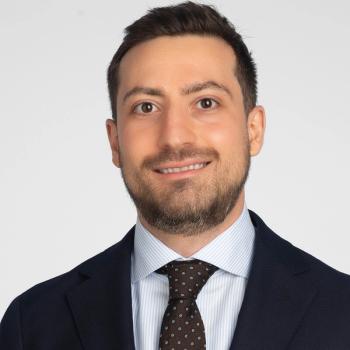
Work/life programs can assist caregivers
As the baby boom generation ages, more and more employees are taking on a second job as caregivers to elderly parents or chronically ill relatives.
As the baby boom generation ages, more and more employees are taking on a second job as caregivers to elderly parents or chronically ill relatives. Today, end-of-life issues are forcing their way onto the corporate agenda.
A 2010 study from MetLife puts some dimensions on this growing workplace challenge. It shows that caregivers face higher rates of health problems (high cholesterol, hypertension and depression), report higher levels of stress and more days away from work than colleagues who are not providing care to other family members.
An earlier MetLife study attached dollar estimates to these trends. Lost productivity for working caregivers was estimated at $17.1 billion to $33.6 billion per year in 2002 and 2003, and 2.4% of caregiving employees left the workforce entirely in 2004. These measures may not fully capture the associated presenteeism cost at work.
CHALLENGES FACED BY EMPLOYERS
Many employees may feel reluctant to raise such personal issues at work, particularly when unemployment is high and Americans are worried about keeping their jobs. Others may simply feel more comfortable dealing with end-of-life issues on their own, and may not realize how much these issues affect their work performance.
Transparent, confidential discussions around end of life can help employers create a workplace environment that alleviates these fears. Voluntary participation in caregiving support programs also encourages employees to acknowledge issues when they are ready.
Employers may be concerned by the apparent scarcity of data on the value of caregiving programs in the workplace. However, certain metrics can help employers monitor and evaluate the productivity cost of caregiving and the impact of policy and program changes. These include employee engagement scores, absenteeism rates, recruitment, retention, turnover and disability costs, just to name a few.
TIPS FOR EMPLOYERS
Employers looking to get started in this area should assess the extent to which end-of-life issues affect their workforce. At this stage, direct feedback from employees is critical. Once the assessment is complete, it becomes easier to identify potential gaps in coverage and wellness programming.
Selecting programs and services that could act as a foundation for caregiving programming is the next step. A natural starting point for many companies are existing work/life programs and Employee Assistance programs, among others.
Employers may also want to consider adopting tools and resources that help both facilitate conversations about end of life and reduce the stress associated with caregiving. Organizations with an established wellness program could implement these tools as a part of their suite of offerings.
For example, companies that operate onsite clinics should train their medical staff to address the particular health needs of caregivers. As a group, caregivers often skip their own preventative medical testing and screenings while caring for others. Incorporating relaxation techniques into each clinic encounter can also help reduce the stress associated with caregiving.
Another priority is training and support for managers on how to help employees dealing with end-of-life issues. Armed with the right knowledge, managers can help connect their affected employees with the resources and tools available within an organization, helping to increase the morale and productivity of their team.
INITIAL EFFORTS
Several organizations recognize the importance in providing end-of-life resources and caregiving programs for the overall health of an organization. A number of large corporations offer a variety of such resources. They include caregiver fairs, lunchtime seminars, flexible work schedules and dependent care accounts, among others.
General Electric is an example of an organization taking the lead on end-of-life issues within the workplace. GE incorporates a comprehensive assessment checklist into its disability and workers compensation programs to ensure that employees with a terminal diagnosis make the most of all services and benefits available to them. Another example is Aetna. Aetna introduced a program for their ill employees and clients to increase hospice utilization, which resulted in significant decreases of acute and critical care, while improving caregiver satisfaction.
The National Business Group on Health (NBGH) is a resource for employers wishing to advance their caregiving programs and initiatives. In early 2009, the NBGH convened a workgroup of its members to address end-of-life issues in conjunction with its involvement with National Priorities Partnership work on Palliative Care. The NBGH has also developed an employer toolkit for member companies to increase awareness of end-of-life issues within the workplace.
Although formalizing programs for caregivers in the workplace may seem daunting at first, demographic trends suggest a sense of urgency is appropriate. Although organizations that already focus on the health and wellness of their employees have a strong foundation of programs upon which to build, there are relatively simple steps that any organization can take to provide the right environment for care givers in the workforce.
By focusing on end-of-life issues earlier rather than later employers have a greater chance of offering support to employees, managing employee productivity and controlling health care costs for long-term benefits.
As Corporate Medical Director for Pitney Bowes, Dr. Brent Pawlecki is a key leader in directing corporate health and productivity for the organization. Dr. Pawlecki is responsible for all clinical and wellness programs and the Absence Management Department at Pitney Bowes.
Newsletter
Get the latest industry news, event updates, and more from Managed healthcare Executive.






















































